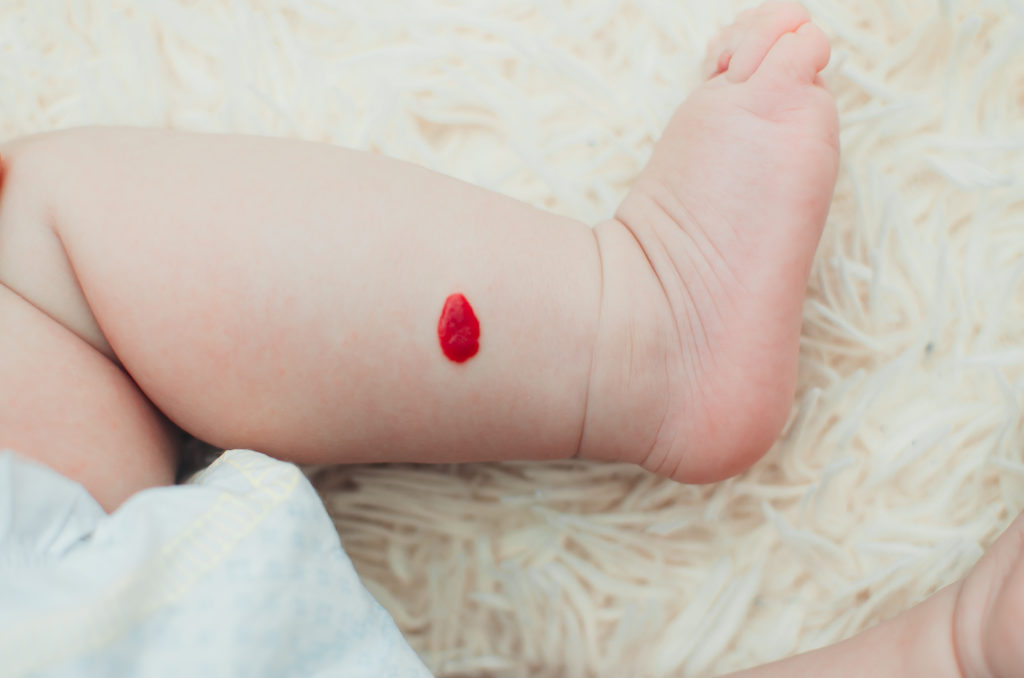Finding a bump on your skin can be seriously frustrating… and scary. How the heck are you supposed to cover that thing up — and will it ever go away?! Plus, with all the warnings you hear about skin cancer (more than four million people in the U.S. are diagnosed with the most common kind, basal cell carcinoma, every year), discovering a weird spot somewhere on your face or body can also turn you into a worried mess.
The thing is, certain types of marks are actually harmless! That includes angiomas, which are bright red in color. That being said, not all angiomas are the same. Confused about what type of red spots you have on your skin? We’re breaking down two common types of angiomas: cherry angiomas, and hemangiomas. Keep reading to learn about what causes these bumps and whether or not there’s anything you can do to nix them.
Help! I have a red bump on my skin — could it be an angioma?
At the most basic level, angiomas are benign (read: non-cancerous) growths that are collections of small blood vessels… hence their red color. They can pop up just about anywhere on your body. There is one type of angioma that happens in kids and one that happens in adults.
Cherry angiomas vs. hemangiomas: What exactly is the difference?
Let’s start with cherry angiomas.
They have a pretty sweet name — and it makes sense, given that their color is similar to that of the fruit. Cherry angiomas are tiny bumps (no bigger than a ¼ of an inch in diameter) that can range in color from bright red to deep purple. They most often occur on the arms, legs, shoulders, and torso.
Cherry angiomas tend to first show up on your skin in your thirties, and they tend to get bigger and appear more frequently as you get older. They’re circular in shape and can either lie flat on your skin or be raised. Although doctors don’t know for sure what causes cherry angiomas, there’s a good chance that they appear due to genetics (thanks, Mom!).
While cherry angiomas usually don’t make their presence known until you’re well into adulthood, hemangiomas are almost always seen in babies.
What are hemangiomas?
This type of growth can be large and feel like rubber, but it shouldn’t hurt!
Hemangiomas can be congenital, which means the baby was born with the growth, or infantile, meaning it appeared shortly after birth, but still during infancy. Congenital hemangiomas can shrink (or stay the same size) as the child grows up, but infantile hemangiomas typically balloon in size quickly until the child’s first birthday, before they then slowly shrink and disappear. They’re most commonly found on a baby’s face, scalp, chest, or back. Babies who are female, premature, or white have a higher instance of hemangiomas.
While hemangiomas show up before a little one’s first birthday, they usually go away on their own. In fact, by the time you’re 10, they should be gone, although you could be left with slight discoloration. In other words, unless you’re still a wee little one, chances are whatever red spot you have on your skin isn’t a hemangioma.

Is there anything I can do to get rid of an angioma?
Angiomas — both cherry angiomas and hemangiomas — are harmless, so unless they’re bothering you in some way, they don’t need to be treated. Now, like we told you a minute ago, hemangiomas disappear on their own in childhood. They can sometimes bleed or impair your vision or hearing (if they grow on your face), so in that case you’d want to visit your doctor. And, as always, if your angioma starts to change or look different, bleed, or become itchy, it’s best to visit a professional to find out what’s going on.
As far as cherry angiomas go, there’s no medical need to get rid of them. If they bother you cosmetically, you do have a few options — but they’re all kind of intense.
One cherry angioma treatment is electrocauterization, in which your angioma will be burned off via electrical current. Cryosurgery is another cherry angioma treatment — during this, you’d have your spot frozen with liquid nitrogen. You can also have a cherry angioma removed with a pulsed dye laser or have it cut out of your skin.
Before you head to the dermatologist ASAP, keep in mind that it is possible for cherry angiomas to come back post-treatment — meaning there’s no guarantee that you’ll be rid of them for good. Sometimes the best thing to do is to learn to love your body’s quirky growths!
Dr. Betty Yan, a dermatology resident at Southern Illinois University School of Medicine (SIU), helped contribute to the accuracy of this story.








I started to get cherry angiomas well before 30. In my mid 20’s. Sucks as the harder I train, the more I get. Upper body only. Chest, stomach, back and neck.
Our body is a weird and wonderful living thing.